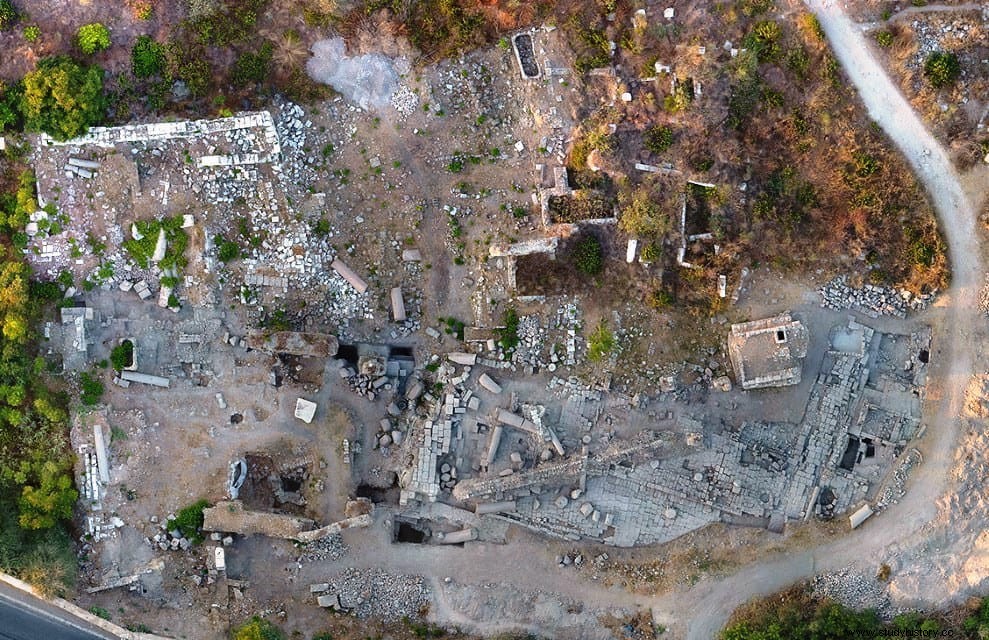In 2020 the Polish Center for Mediterranean Archeology at the University of Warsaw joined forces with Lebanese and Spanish colleagues who had been investigating the Tire site since 1997 to form the Spanish-Polish-Lebanese Archaeological Expedition in Tyre. The expedition is jointly led by Professor María Eugenia Aubet from Pompeu Fabra University in Barcelona, Dr. Ali Badawi from the General Directorate of Antiquities in Lebanon, and Dr. Francisco J. Núñez from the University of Warsaw. Archaeologists and specialists from Lebanon, Spain, Poland, Italy, Portugal, France and Greece participate in the project.
The city of Tire was one of the most important economic centers of the Mediterranean world during much of Antiquity. Settled since the Bronze Age (3rd millennium BC), it was located on an island off the coast, which ended up being linked to it by a causeway built by Alexander the Great.

In the Bronze and Iron Ages it was a prosperous center of Phoenician trade, industry and crafts. In the written sources (including the Bible) it appears as one of the crucial economic and political centers that the powers of the time had to count on, whether they were the Assyrians, the Egyptians or the kings of Israel and Judea.
From Tyre, the Phoenician colonists mainly left for the western Mediterranean, founding the commercial center of Cádiz, or the renowned Carthage that challenged the Romans in the Punic wars. Tire retained its importance during most of the later periods, and remains one of the largest cities in Lebanon.

From an archaeological point of view, almost five millennia of uninterrupted occupation make Tire an object of study as fascinating as it is difficult. Overlapping architectural remains, along with natural disasters, rising sea levels, and the dynamism of land use planning and public works in recent decades effectively obscured the character of ancient architecture – admits Dr. Francisco J. Núñez.
Although Lebanese excavations at Tire began in the 1960s, most of the documentation disappeared in the turmoil of the civil war that broke out in 1975. Furthermore, much of that work was concentrated on the classical and medieval levels. Given the historical importance of Tire in the Bronze and Iron Ages, we actually have very little archaeological evidence from those periods -explains Dr. Núñez, and adds- In fact, our knowledge of the ancient city is largely limited to glimpses of Roman and Byzantine remains that are now concentrated in two archaeological parks:in the sites of al- Bass and the Basilicas .

One of the goals of the current project is to shed light on the nature, history and evolution of urban planning on the ancient island. The currently excavated area is located on the Acropolis of Tyre, presumably the highest point on the ancient island. Excavations there in the 1970s revealed structures from all ages that still need to be interpreted, but also left behind deep cores that yielded crucial stratigraphic sequences.
The team has analyzed the excavated remains and has verified that they present a series of architectural features and findings, such as Greek and Phoenician inscriptions, which point to a sacred character of the investigated area. According to Dr. Núñez, the cultural character of this area is manifested above all from Roman times, until its destruction at the beginning of the Byzantine era. As for the Iron Age, this character is not yet fully confirmed, but the Iron Age structures we have found so far seem to be sitting on a platform, which is a clear hallmark of sacral buildings – add.

The researchers concentrated their efforts on the area previously excavated by Emir Chehab. They studied the remains again and evaluated their importance for the reconstruction of the stratigraphy of the site.
The investigations focused on a huge structure built in Roman times, identified as a temple. It presents two main phases:one dating from its construction in the early Roman period and another from an important modification in the late Roman period.
The building has a rectangular plan with an east-west orientation, a vestibule flanked by two columns (found lying around) and a podium on the other side of the cella. The walls of the building were originally covered with sandstone blocks and it is possible that to the south of the entrance there was an underground chamber. The building stood on a platform of huge limestone and sandstone blocks that supported the heavy load of the façade and, in particular, the eight-meter-high columns of pink Egyptian granite.

An east-west oriented arcaded street led to the building's stepped entrance, decorated with slabs engraved with geometric motifs. The street branches off perpendicularly from a narrower one, where a shrine was identified this season. It was a structure composed, it seems now, of two rooms and a courtyard aligned on a north-south axis, one of them adorned with an Egyptian relief depicting Isis nursing Horus as a child.
The temple and the urban area linked to it suffered extensive damage and changes in the early Byzantine era. The temple was dismantled and covered by a platform that supported a monumental basilica, destroyed, along with much of the city, by a tsunami in the 6th century AD. Later remains from the Fatimid, Crusader, and Ottoman periods have also been recognized.
